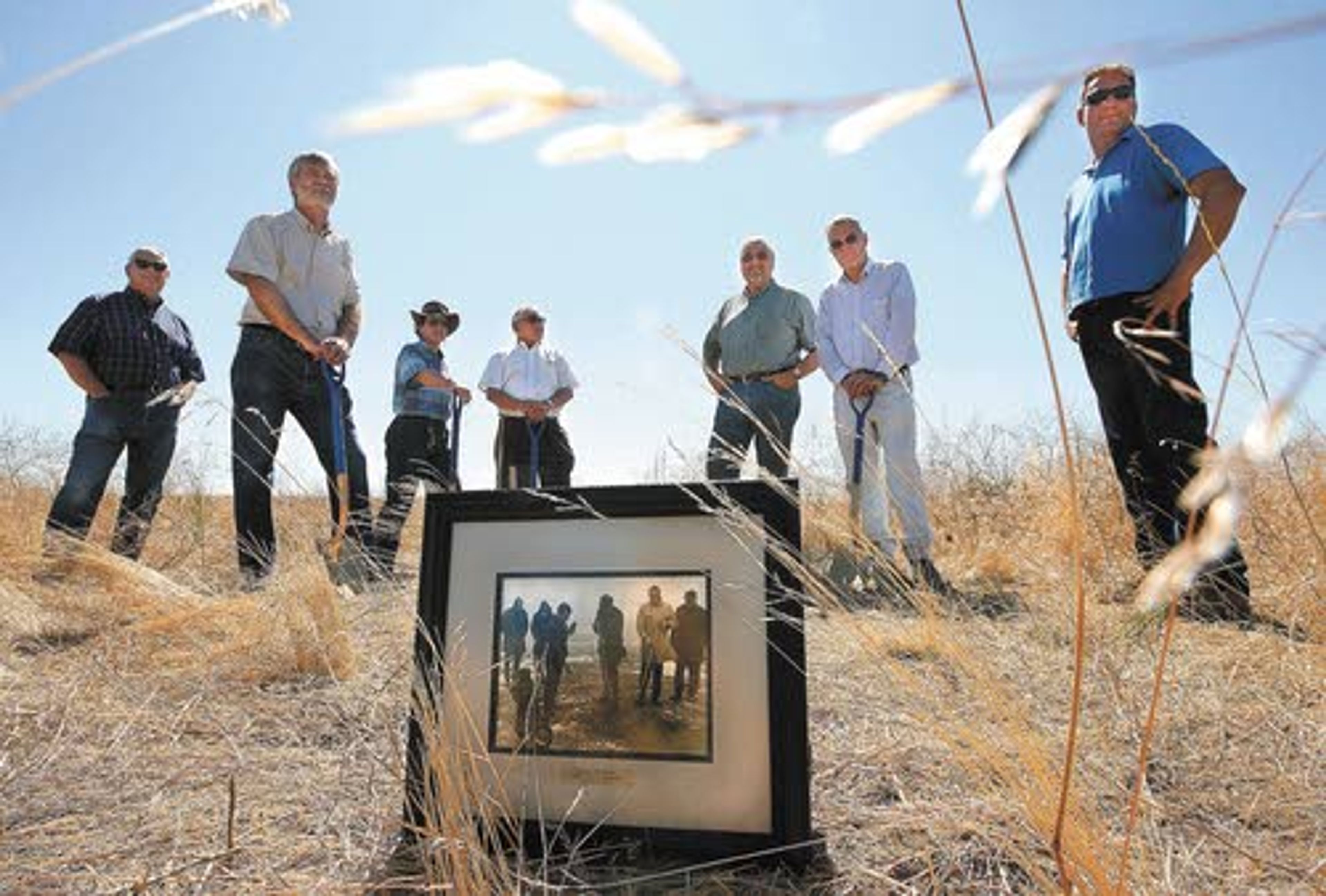Ground broken for Tri-Cities observatory
Darker skies at Horse Heaven Hills make up for lack of elevation at new observatory
KENNEWICK - Forty years after ground was broken for the Rattlesnake Mountain Observatory, ground was broken Wednesday for its new home in the Horse Heaven Hills.
The Alliance for the Advancement of Science Through Astronomy, or AASTA, had been looking for a new home for the observatory since the Department of Energy ordered it taken down from the top of Rattlesnake Mountain in 2008.
It should reopen as the Pacific Northwest Regional Observatory in 2012, welcoming students and community visitors. Nonprofit AASTA's goal is to create a hands-on science learning center for students, teachers, researchers and the community.
New sites were offered from Dayton to Toppenish as AASTA looked for a new home for the telescope in the mid-Columbia.
But the Braden Farm, owned by Whitman College in Walla Walla through a donation, turned out to be the best fit.
At almost 1,600 feet, the new home for the telescope can't match Rattlesnake Mountain's clear skies at 3,600 feet. But the night sky is darker there, said Roy Gephart of AASTA, who led the search for the new site.
"Pristine," he said. "We have 80 percent-plus of the sky."
At Rattlesnake Mountain, the growth of the Tri-Cities plus increasing lighting at the Hanford nuclear reservation had begun to intrude on the darkness of the night sky, although its high elevation meant less atmosphere to distort the view and a perch that often was above weather inversions.
But at the new site in the Horse Heaven Hills, some of the surrounding hills help block much of the glow from the Tri-Cities and Walla Walla.
AASTA also liked that Whitman College provided a landowner focused on education, that electricity and water were available nearby and that a Walla Walla County road leads almost to the site. Yet it's remote enough that no nearby development is expected to pollute the night sky with light.
"This area is going to stay the same for a significant time," Gephart said.
Once it opens, visitors from the Tri-Cities will have a 25-minute drive, heading south to the intersection of highways 12 and 730. It's three miles southeast of the intersection on a winding gravel road through wheat fields and past wind turbines.
"It's out in the middle of what looks like almost nowhere," Gephart said. "But it is half way between Columbia Basin College and Whitman College."
The Rattlesnake Mountain Observatory started out as an idea of Richmond (Dick) Hoch. As a Battelle expert in atomic physics, he had gone up to the top of Rattlesnake Mountain to look for auroras and the idea of setting an observatory was born. He secured the money for the observatory bit by bit from Battelle, starting out buying the optics piece by piece.
The observatory, built in 1971, would be visited by thousands of people, including academic users from universities across the country and NASA scientists looking for space debris.
It housed the largest professional-grade telescope in the state, according to AASTA. In 1996, Battelle, which operates Pacific Northwest National Laboratory for the Department of Energy in Richland, leased the observatory to AASTA and later donated it.
But in recent years, restrictions on access to the top of Rattlesnake Mountain limited the use of the observatory's telescope. In 2008, DOE ordered it taken down as it cleared most buildings from the top of Rattlesnake Mountain, which is part of the security perimeter around the Hanford nuclear reservation that is off limits to the public.
That might have been the end of the observatory, if Battelle had not offered $250,000 to help take it down and relocate it.
The observatory came down the mountain in pieces two years ago, and since then its 0.8-meter Cassegrain telescope has had a thorough working over at CBC. It will be installed at the Pacific Northwest Regional Observatory with mechanical, optical and electronic improvements completed.
"CBC has made all the difference," Hoch said. "This would be in the junk pile without them."
But it's Hoch who those who have worked to save the observatory and telescope want to honor.
When it is reinstalled, it will be dedicated as the Richmond J. Hoch Telescope.
"He's been with it from the beginning," Gephart said. "He's nurtured it all along."
Supporters of the relocated observatory raised their water bottles for an impromptu toast in the Horse Heaven Hills on Wednesday. "Astronomy - the gateway to all the other sciences," Hoch said.
Students will see firsthand how science is done, said John Lafemina, director of institutional strategy for PNNL. PNNL is particularly interested in plans to initiate remote use of the telescope, allowing students 1,000 miles away to use it.
"It's just a great time to be a kid in science," said Mike Durst, director of the CBC Moore Observatory.
Whitman College and CBC plan to use the relocated observatory in their degree programs. At CBC students will continue to use the smaller Moore Observatory in Pasco for the first two years of their education, but then will transition to the Pacific Northwest Regional Observatory in their junior and senior years.
By the time they graduate in a joint CBC-Heritage University program, they should have the hands-on experience to operate any type of optical equipment and will have written a publishable research paper, Durst said.
AASTA and others also are developing a science education consortium that is expected to include other institutions, such as LIGO at Hanford and Washington State University Tri-Cities.
Walla Walla County has rezoned the one-acre site picked for the observatory as an astronomy park, allowing site preparation to begin. Apollo Inc. of Kennewick will be leveling the hilltop that has been picked and laying down gravel to protect the observatory from wildfires.
It also will build the observatory, using parts saved from Rattlesnake Mountain. Major construction should be completed by late 2011. A dedication tentatively is planned for November, but then work will need to be done to make the observatory operational and have it ready to use in 2012.
The Battelle donation should carry AASTA through reopening of the observatory. Late AASTA plans to build a classroom at the Pacific Northwest Regional Observatory.









